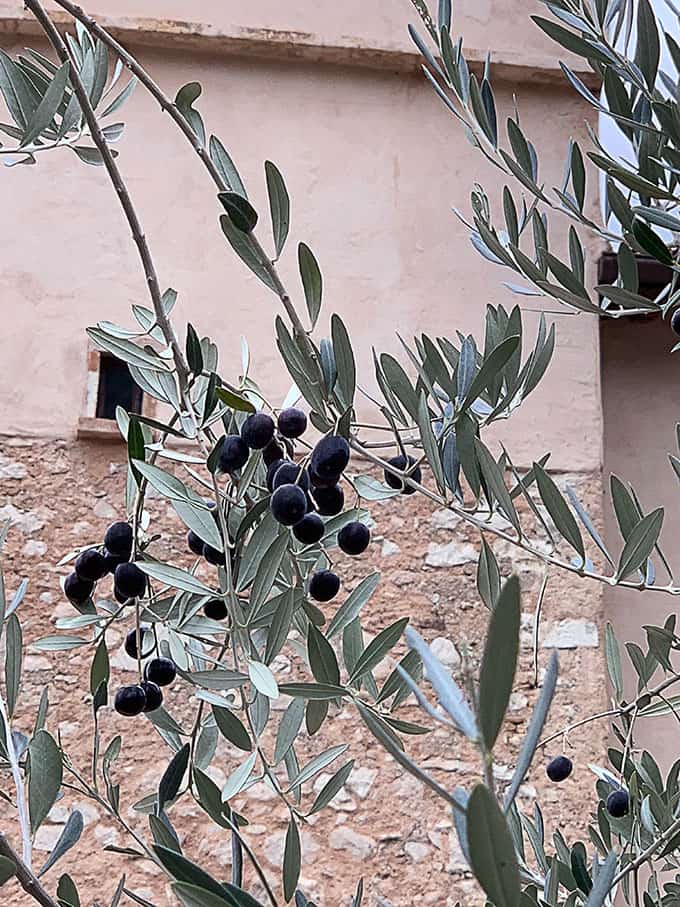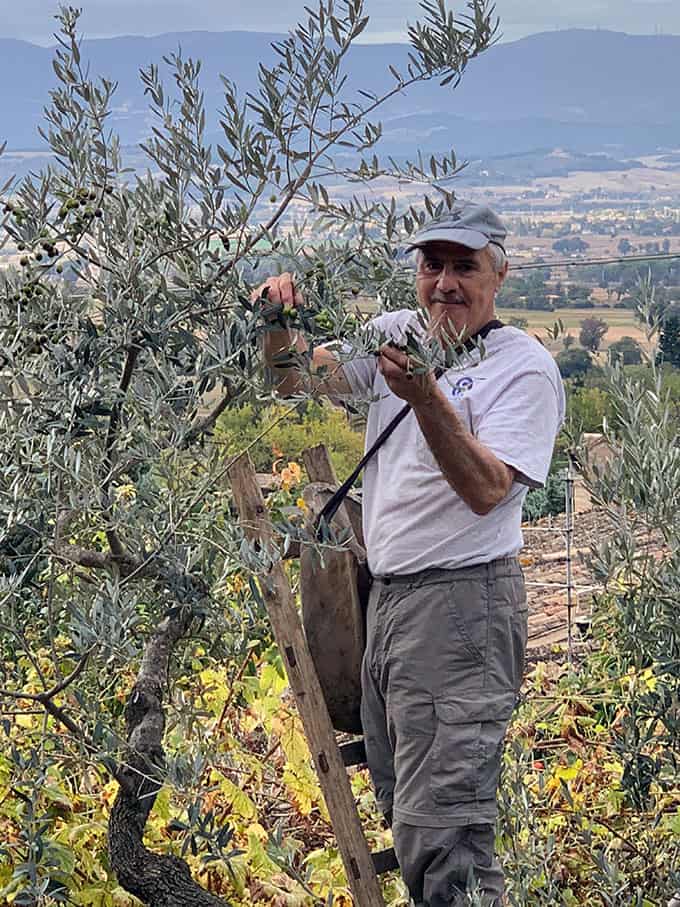I usually feature plants that people in the Northeast can grow. But since I just returned from Italy, this tree is on my mind.
Name: Olea europaea ‘Leccino’ aka the Leccino olive, the plant that makes the fruit that is used to make Italian olive oil
Type of Plant: A tree that is hardy in zones 8 to 10, with lovely, silvery foliage all year around and pretty fruit that is used to make olive oil. This is one of the first trees to be cultivated by people.
Why I Love/Hate this plant: You have to admire a plant that grows in areas where there are months that are hot but without rainfall. And this plant seems designed to endure. In the orchards there are often huge stumps and large, old roots with a tree topping them. These roots and stumps show signs of fire or other injuries, but although the original tree trunk is long gone, others have grown up to replace previous growth that was destroyed.
A Word to the Wise: Sometimes people try to grow this plant in a container that stays indoors during the winter. If you want olives, however, you’ll need a place to over-winter them where the temperatures stay between 40 and 50 degrees for two months. If the plants are kept too warm, they won’t flower. So not the easiest plant to grow in colder regions.
Although we can’t grow olives outdoors in New England, be sure to travel to locations where they do flourish. Get yourself to California, Greece, or Italy…you’ll have a new appreciation for olive oil every time you enjoy some.
Here are some of the photos I took in Umbria this week.

Here are some of the olive fields in Umbria, near where we were staying.

The olive trees at Jim and Amy’s house are such a lovely silver color.

Much of the fruit was ripe as you see in this photo, but some olives on the other trees were still green. All are picked and pressed at the same time, however.

Here is Dan, picking the olives. In this part of Italy the olives are all harvested by hand.

These are the olives that came from Jim and Amy’s trees. I was told that they aim for a mix of about a quarter to a third green ones.

The olives are taken to a neighbor’s press. All the olives go into the system on the right. They are shaken to get some of the leaves and stems out, and then washed. After that they go into the grinder, and then spun to remove the oil.

And out the oil comes! It’s a bright green when it’s very fresh, and it’s delicious. The green color fades as the oil ages. I was told that the majority of the oil removed from the olives comes out of the pits, not the flesh.

Fascinating and so very beautiful! Lesson learned that much of our olive oil comes from the seeds. You are a fountain of knowledge. Thank you!
I fell in love with olive trees when I visited in the south of France. There is an ancient one growing right by the Pont de Gard…built by the Romans dated 55AD, I was told this tree was a gift from Spain to France. Love you review of this and your photos are stunning, esp the one with olives growing on the tree. And did not know the pit was part of the oil!! Wow….Thank you, C.L.